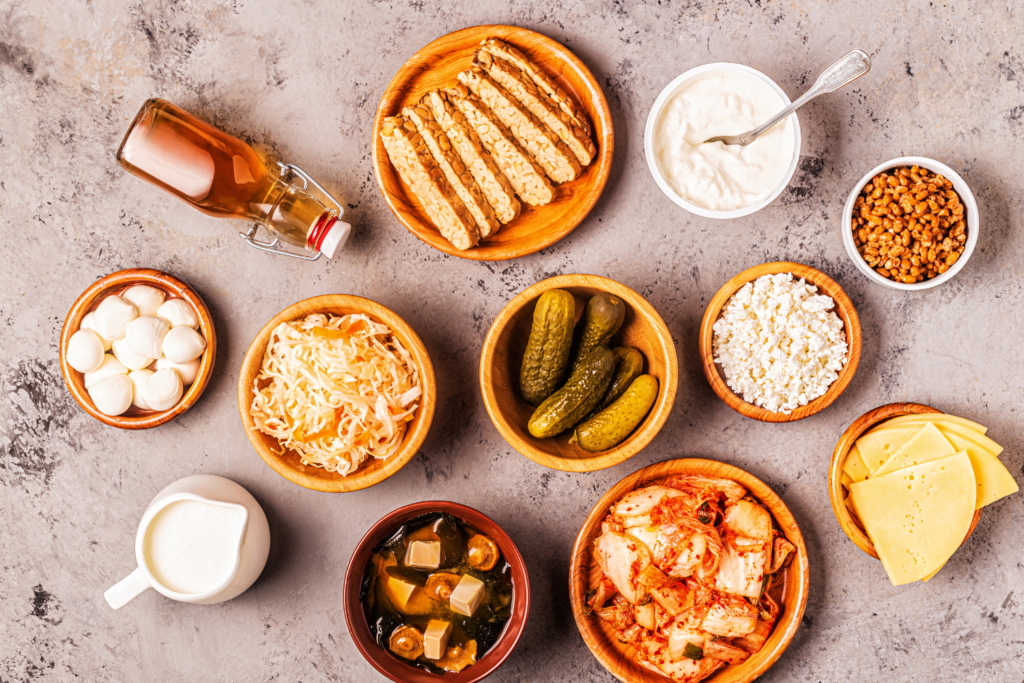Food of the Month – Probiotic Foods

Probiotics are beneficial bacteria which inhabit the gastrointestinal (GI) tract. Though most commonly identified in supplement form, probiotic foods also contain gut-supportive bacteria, with the added benefit of being a flavor booster on your plate.
Nutrition: Bacteria in the colon can break down fibers that the human body cannot, liberating extra nutrition from food; specifically beneficial is the creation of short-chain fatty acids (SFAs), which nourish and support colonocytes and enhance intestinal barrier function. A beneficial SFA is butyrate, formed when gut bacteria break down specific fibrous foods including beans, lentils, sweet potatoes, onions, garlic, and oats.
Purchasing Tips: Most probiotic foods can be found in the refrigerated section. Because they contain live and active cultures, their flavor changes over the life of the food. Probiotic foods are often in a cloudy liquid which is rich in beneficial bacteria and should be consumed. Probiotics need specific pre-biotic fibers to flourish in the gut, good sources include foods like barley, raw vegetables, onions, and garlic.
FYI: Best to skip probiotics if you are severely immunocompromised or have neutropenia. Registered Dietitians promote a food first approach as nutrition supplements, including probiotic pills, are not subject to FDA approval prior to marketing. Probiotics are being studied for benefit in digestive conditions such as C. diff, irritable bowel syndrome, ulcerative colitis, Crohn’s disease, general constipation, and diarrhea as well as prevention or treatment of food allergies, eczema, and vaginal infections.
Fun Facts: First recorded around 6000 BCE, probiotic foods have a rich cultural history around the globe. While kombucha has become popular recently, the Japanese have been brewing this fermented tea since around 400 BCE. Other strong probiotic food traditions include kimchee in Korea, yogurt in Bulgaria, and fish sauce in Thailand. Additional probiotic foods commonly found in the market are unfiltered apple cider vinegar, kefir, and miso as well as sauerkraut and pickles which are not heat-treated. Lactofermentation uses a salty environment to preferentially favor lactobacillus species which convert sugar to lactic acid, imparting tart or sour notes.
Click here for a quinoa and chickpea power salad to support your health after the holiday season!
